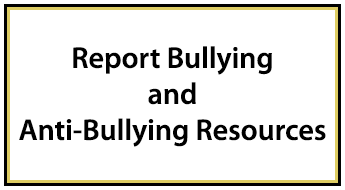If we experience a physical concern, we see a medical doctor. Just as we care for our physical body, we also need to care for our mental wellness. In fact, mental health includes the brain-a vital organ that impacts our entire body, so we need to take extra special care of it! Often when we think of mental health, we think of mental illness. The truth is mental health involves more than just mental illness. Mental health also includes wellness. Mental wellness means we have the skills necessary to cope with life’s challenges. Mental wellness impacts not only how we feel, but it impacts our physical health, relationships and functioning at school/work. It is something everyone should care about.
A healthy lifestyle can help to prevent the onset or worsening of mental and physical health conditions. With increased attention, there are several ways to improve your mental health. Below is a list of ways to get started on the path to wellness. You can also click here to download and print a pdf copy of the mental health wellness tips outline below.
Ways to Increase Mental Health:
- Animals: A pet that is a companion can positively impact a person's quality of life. This is because studies have shown that pets can decrease stress, lower blood pressure (Barker, 2010) and reduce loneliness. Pets can even help people recover from physical illnesses. For different therapies to treat mental illness, animals have been shown to reduce anxiety, depression and aggression, while allowing for socialization (Gagnon, 2004; Annick Maujean & Kendall, 2015).
- Exercise: Physical health and exercise release endorphins that make us feel good. By incorporating physical exercise into our day, we are making strides to being healthy overall. Any type of movement or exercise will help (e.g., aerobic, strengthening). Find something you enjoy and make it a part of your regular schedule. Better yet, if you can find an exercise partner, you can also increase social connectedness while exercising! That is a win-win! By setting physical exercise goals, you can increase your feelings of accomplishment and feel great! It is important for each person to understand their risks and safety concerns.
- Humor: Over time, stress can produce hormones that are not healthy for our bodies, but we can combat it with humor. No joke. By incorporating humor into our lives, it reduces damaging stress hormones and can reduce the risk of health conditions, such as blood clots or heart disease. It is really easy...we just have to laugh! Just by laughing, we can decrease stress hormones, stimulate our bodies (heart, lung, muscles), stimulate our brain’s reward system and release endorphins, which are natural pain blockers (JongEun, 2016; Mayo Clinic; Mobbs, Greicius, Abdel-Azim, & Menon, 2003; Franklin & Adams, 2011 ). By incorporating humor, we can have a stronger immune system, increase our mood, relieve anxiety, experience less burnout and have enhanced interactions with others (Gelkopf, 2011; Sliter, Kale, Yuan, 2014).
Want a good laugh? Here are several ways to incorporate humor into your life and get healthy while you are doing it:- List the funny things that happened each day-Go a step further and share this with someone to increase social connections
- Find humor online (humorous blogs, memes, etc.)
- Spend time with a pet or child as they have antics that will at least put a smile on your face
- Read a funny book
- Reach out to someone with your sense of humor to talk about funny things that have happened to you
- Find a funny book or movie
- Purpose: Finding purpose helps you identify meaning and worth in life. Being aware of your values and worth are vital. Realizing you have gifts and can contribute makes you feel connected and valued.
- Social Connections: From the time we are born, we are wired to connect with others. Connecting with others has positive health benefits. Surprisingly, researchers have found that being lonely can cause the same amount of damage to your lifespan as smoking 15 cigarettes per day (Cigna, 2018)! Loneliness is also associated with a risk of high blood pressure in older individuals (Hawkley, Thisted, Masi, Cacioppo, 2010). If one does not have social supports, it can make it more difficult to recover from a mental illness, while strong social supports increase positive outcomes and help build resiliency (Ozbay, Johnson, Dimoulas, Morgan, Charney, & Southwick, 2007). We are built to connect with others!
To stay socially connected and avoid loneliness and isolation, it is important to look for ways to improve social and recreational activities, such as sports leagues, volunteering or taking a class to learn something new through P-H-M’s Community Education, parks and recreation departments, or visiting local stores that offer how-to classes. If you need more information on volunteer opportunities, visit volunteermatch.org for some ideas. Join a sports team or league. Adolescents who participate in sports have lower odds of experiencing depression or thinking about suicide because sports increase social supports and self-esteem (Babbis, Gangwisch, 2009). People who spend time in nature are found to have strong perceptions of their own emotional well-being (Korpela, Tyrvȁinen, 2014), so the simple act of playing outside or taking a walk with someone else is time well spent. There are long-term benefits to social connections as it was found that people who engage in leisure activities (playing board games, playing music and dancing) are less likely to develop dementia (Verghese, Lipton, et al., 2003). Staying connected is vital throughout our lives.
-
Sleep Hygiene: Sleep hygiene encompasses good sleep habits including what we do before we go to bed. This is all about what you can do and control to have a restful night of sleep. Going to bed and waking at the same time each day is an important part of sleep hygiene. It is also important that our practices before bed are consistent as these behaviors impact our sleep quality. For instance, a warm shower, good book, relaxing music, etc. can be signals for your body that is time for bed if done consistently. Just like there are things we can do each night before bed, there are also things we can avoid for good sleep hygiene. For instance, before bed avoid stressful conversations, emotionally upsetting topics, caffeine, heavy meals, and technology. You can also minimize exposure to light, including the light from your electronic device. If worries keep you up at night, jot them down in a journal you can keep by your bed so the worries are parked there until you can deal with them after you have a good night’s rest. It is also important that we do not sleep too much or too little; this includes limiting naps (see below for recommendations on the # of hours of sleep needed by age, per Mayo Clinic). When we get good sleep, our brain can reset and we have the energy to face the day and our tolerance is increased to handle frustrations and irritants from day-to-day.
Recommendations on Amount of Sleep by Age (Mayo Clinic):
-
Newborns-14-17 hours/day
-
12 Months-10 hours/night + 4 hours of naps/day
-
2 years-11-12 hours/night + 1-2 hour afternoon nap
-
3-5 years-10-13 hours
-
6-13 years-9-11 hours
-
14-17 years-8-10 hours
-
Adults-7-9 hours
-
- Spirituality: Just as taking care of your body is important, it is also important to spend engaging in spiritual activities to care for your soul. This may differ for people. There are several benefits associated with spiritual practices. For instance, it has been found that activities like prayer and meditation can increase serotonin, dopamine and endorphins, which are all chemicals that make you feel good and decrease stress-producing hormones like cortisol and noradrenaline. Our spiritual beliefs help give us purpose, meaning and faith, which have all been shown to reduce the risk of suicide and increase mental health (Moons, et al., 2019). Connections to communities of faith provide social connections and supports and may reduce the risk of depression as well (Park, et al., 2017).
Work-Life Balance: Work is a good thing as it can give us purpose and help you provide financially for your family, but when the balance between work and life is out of whack, there can be negative outcomes. When the balance is off kilter, you may experience negative outcomes, such as sleep disturbances, digestive concerns, mental health problems, and strained social relationships. Furthermore, the stress from school/work without the balance of a healthy lifestyle can lead to unhealthy coping habits, such as lashing out or substance abuse in order to cope. Therefore, to maintain your top performance at both school/ work and life and avoid burn-out, it is important to watch for signs of burnout such as absenteeism, increased error rates, exhaustion and respond accordingly. It is also important to give yourself permission to relax and make a point to build guilt-free downtime into your schedule, make a plan and try to stick to it, when you are able to take activities off your plate that cause you to overextend yourself or zap your energy, exercise, take advantage of vacation time and get away if you can, enjoy weekends, focus on time management, make time for family and friends a priority, consider what you want from life and go for it, communicate and problem-solve if concerns arise, rely on your social supports and eliminate/avoid distractions that can suck your time . It is always a balancing act that we must be consciously aware of and actively pursuing.
Resources & References:
- Annick Maujean, Christopher A. Pepping & Elizabeth Kendall (2015) A Systematic Review of Randomized Controlled Trials of Animal-Assisted Therapy on Psychosocial Outcomes, Anthrozoös, 28:1, 23-36.
-
Babiss, LA & Gangwisch JE. (2009). Sports Participation as a Protective Factor Against Depression and Suicidal Ideation in Adolescents as Mediated by Self-Esteem and Social Support. Journal of Developmental & Behavioral Pediatrics. 30(5):376-384.
-
Barker, Sandra B., et al., “Exploratory study of stress-buffering response patterns from interaction with a therapy dog.” Anthrozoös 23.1 (2010): 79-91.
-
Balbuena, L., Baetz, M., & Bowen, R. (2013). Religious attendance, spirituality, and major depression in Canada: a 14-year follow-up study. The Canadian Journal of Psychiatry. 58(4): 225-232.
-
2018 Cigna U.S. Loneliness Index. Retrieved from https://www.cigna.com/assets/docs/newsroom/loneliness-survey-2018-full-r.... 2 Hawkley LC, Thisted RA, Masi CM & Cacioppo JT. (2010). Loneliness predicts increased blood pressure: 5-year cross-lagged analyses in middle-aged and older adults. Psychology and Aging. 25(1):132-141.
-
Franklin, R.G. & Adams, R.B. (2011). The reward of a good joke: neural correlates of viewing dynamic displays of stand-up comedy. Cognitive, Affective, & Behavioral Neuroscience. 11(4): 508-515.
-
Gagnon, Johanne, et al., “Implementing a hospital-based animal therapy program for children with cancer: a descriptive study.” Canadian Oncology Nursing Journal/Revue canadienne de soins infirmiers en oncologie 14.4 (2004): 217-222.
-
Gelkopf M. (2011). The use of humor in serious mental illness: a review. Evidence-based complementary and alternative medicine: eCAM, 2011, 342837.






